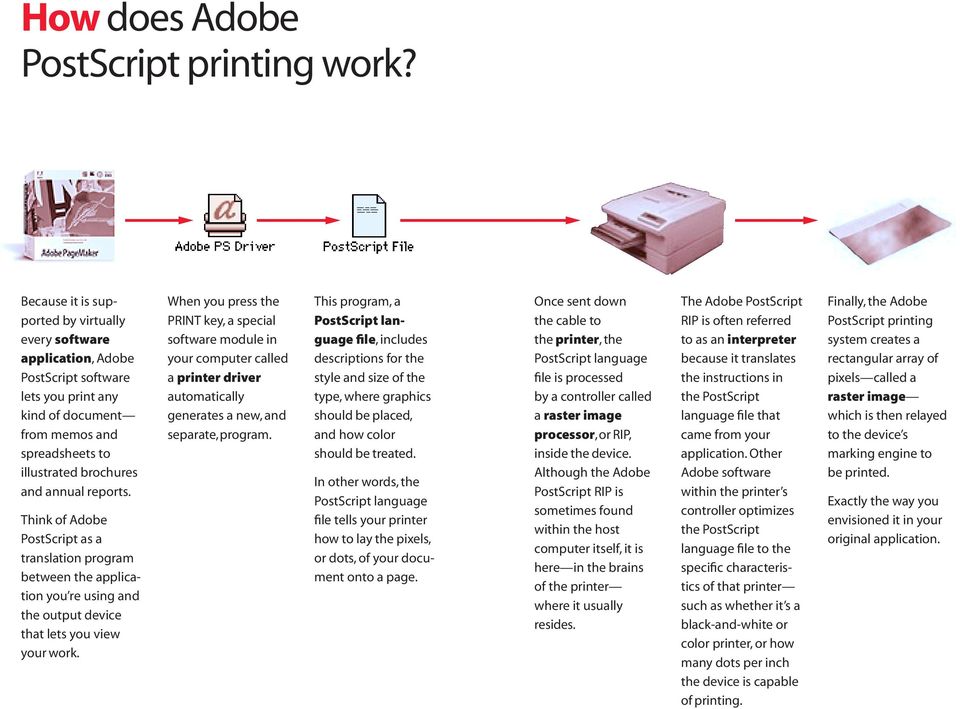
- #Postscript rip software free pdf#
- #Postscript rip software free driver#
- #Postscript rip software free software#
- #Postscript rip software free professional#
- #Postscript rip software free download#
Sharp, clean, dense films that expose easily making the best screen prints possible. Emerald automatically installs its own printer driver.
#Postscript rip software free professional#
Professional Screen Printers as well as hobbyists appreciate how fast and easy it is to setup and configure Emerald producing top-quality film results. No learning curve, simply select the print driver, choose the separation settings you need and print perfect film separations.
#Postscript rip software free driver#
Simply choose our universal “AccuRIP Emerald” printer driver in the print window.
#Postscript rip software free software#
This post was first published in June 2019.ġ.AccuRIP™ Emerald software is the latest film printing RIP from Freehand engineered to deliver professional films used for the screen exposure process!ĪccuRIP™ software is your go-to solution for printing great films from Adobe, Corel, Sep Studio NXT and other mainstream graphics applications.
#Postscript rip software free download#
To find out more about the Harlequin RIP, download the latest brochure here. The Harlequin RIP includes native interpretation of PostScript, EPS, DCS, TIFF, JPEG, PNG and BMP as well as PDF, PDF/X and PDF/VT, so whatever workflows your target market uses, it gives accurate and predictable image output time after time. For very large presses huge single pages or images may also be split into multiple tiles and those tiles sent to different RIPs to maximize throughput. File formats that can hold multiple pages in a single file, such as PDF, are split so that some pages go to each RIP, load-balancing to ensure that all RIPs are kept busy. Alternatively it can be done after the Harlequin RIP has delivered unscreened raster data this is valuable if screening is being applied using Global Graphics’ ScreenPro™ and PrintFlat™ technologies, for example.Ī DFE for a high-speed press will typically be using multiple RIPs running in parallel to ensure that they can deliver data fast enough.

RIPping often includes a number of additional processes in the Harlequin RIP® for example: In other environments the output stage is tightly coupled with rendering, and the output raster is kept in memory instead of writing it to disk to increase speed. Sometimes this step is completely decoupled from the RIP, perhaps because plate images are stored as TIFF files and then sent to a CTP platesetter later, or because a near-line or off-line RIP is used for a digital press. Output: The raster produced by the rendering process is sent to the marking engine in the output device, whether it’s exposing a plate, a drum for marking with toner, an inkjet head or any other technology. The term ‘rendering’ is sometimes used specifically for this part of the overall processing, and sometimes to describe the whole of the RIPing process. Rendering: The display list is processed to convert every graphical element into the appropriate pattern of pixels to form the output raster.
#Postscript rip software free pdf#
This phase is only required for any graphics in formats that support live transparency, such as PDF it’s not required for PostScript language jobs or for TIFF and JPEG images because those cannot include live transparency. This database is referred to as a display list.Ĭompositing: The display list is pre-processed to apply any live transparency that may be in the job. Each may be an image, a character of text (including font, size, color etc), a fill or stroke etc. Interpreting: The file to be RIPped is read and decoded into an internal database of graphical elements that must be placed on the output. Even image file formats such as TIFF, JPEG or PNG usually need to be RIPped, to convert them into the correct color space, at the right resolution and with the right halftone screening for the press. The process of RIPping a job requires several steps to be performed in order, regardless of the page description language (such as PDF) that it’s submitted in. The RIP converts text and image data from many file formats including PDF, TIFF™ or JPEG into a format that a printing device such as an inkjet printhead, toner marking engine or laser platesetter can understand.


Ever wondered what a raster image processor or RIP does? And what does RIPping a file mean? Read on to learn more about the phases of a RIP, the engine at the heart of your Digital Front End (DFE).


 0 kommentar(er)
0 kommentar(er)
